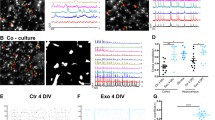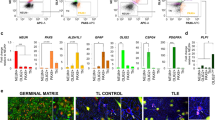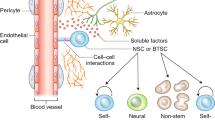Abstract
The prodromal stages of some neurological diseases have a distinct electrical profile which can potentially be leveraged for early diagnosis, predicting disease recurrence, monitoring of disease progression, and better understanding of the disease pathology. Gliomas are tumors that originate from glial cells present in the brain and spinal cord. Healthy glial cells support normal neuronal function and play an important role in modulating the regular electrical activity of neurons. However, gliomas can disrupt the normal electrical dynamics of the brain. Though experimental and clinical studies suggest that glioma and injury to glial cells disrupt electrical dynamics of the brain, whether these disruptions are present during the earliest stages of glioma and glial injury are unclear. The primary aim of this study is to investigate the effect of early in vitro glial pathology (glioma and glial injury in specific) on neuronal electrical activity. In particular, we investigated the effect of glial pathology on neural synchronization: an important phenomenon that underlies several central neurophysiological processes (ScienceDirect, 2018 ). We used two in vitro disease samples: (a) a sample in which cortical cultures were treated with anti-mitotic agents that deplete glial cells and (b) a glioma sample in which healthy cortical cells were cultured with CRL-2303 (an aggressive glioma cell line). Healthy cortical culture samples were used as controls. Cultures were established over a glass dish embedded with microelectrodes that permits simultaneous measurement of extracellular electrical activity from multiple sites of the culture. We observed that healthy cortical cultures produce spontaneous and synchronized oscillations which were attenuated in the absence of glial cells. The presence of glioma was associated with the emergence of two types of “abnormal electrical activity” each with distinct amplitude and frequency profile. Our results indicate that even early stages of glioma and glial injury are associated with distinct changes in neuronal electrical activity.

Graphical abstract







Similar content being viewed by others
References
Auld DS, Robitaille R (2003) Glial cells and neurotransmission: an inclusive view of synaptic function. Neuron 40:389–400. https://doi.org/10.1016/S0896-6273(03)00607-X
Halassa MM, Fellin T, Haydon PG (2007) The tripartite synapse: roles for gliotransmission in health and disease. Trends Mol Med 13:54–63. https://doi.org/10.1016/j.molmed.2006.12.005
Armstrong TS, Grant R, Gilbert MR, Lee JW, Norden AD (2016) Epilepsy in glioma patients: mechanisms, management, and impact of anticonvulsant therapy. Neuro-Oncol 18:779–789. https://doi.org/10.1093/neuonc/nov269
Themes UFO (2016) Brain tumors and other space-occupying lesions. In: Neupsy Key. https://neupsykey.com/brain-tumors-and-other-space-occupying-lesions/. Accessed 25 May 2018
Beaumont A, Clarke M, Whittle IR (1996) The effects of malignant glioma on the EEG and seizure thresholds: an experimental study. Acta Neurochir 138:370–381
Buckingham SC, Campbell SL, Haas BR, Montana V, Robel S, Ogunrinu T, Sontheimer H (2011) Glutamate release by primary brain tumors induces epileptic activity. Nat Med 17:1269–1274. https://doi.org/10.1038/nm.2453
Dement W, Kleitman N (1957) Cyclic variations in EEG during sleep and their relation to eye movements, body motility, and dreaming. Electroencephalogr Clin Neurophysiol 9:673–690
Cabral J, Hugues E, Sporns O, Deco G (2011) Role of local network oscillations in resting-state functional connectivity. NeuroImage 57:130–139. https://doi.org/10.1016/j.neuroimage.2011.04.010
Singer W (1993) Synchronization of cortical activity and its putative role in information processing and learning. Annu Rev Physiol 55:349–374. https://doi.org/10.1146/annurev.ph.55.030193.002025
Başar E, Güntekin B (2008) A review of brain oscillations in cognitive disorders and the role of neurotransmitters. Brain Res 1235:172–193. https://doi.org/10.1016/j.brainres.2008.06.103
Epileptic seizures and epilepsy: definitions proposed by the International League Against Epilepsy (ILAE) and the International Bureau for Epilepsy (IBE), Fisher ( 2005) Epilepsia - Wiley Online Library. https://onlinelibrary.wiley.com/doi/full/10.1111/j.0013-9580.2005.66104.x. Accessed 25 May 2018
Yener GG, Güntekin B, Oniz A, Başar E (2007) Increased frontal phase-locking of event-related theta oscillations in Alzheimer patients treated with cholinesterase inhibitors. Int J Psychophysiol Off J Int Organ Psychophysiol 64:46–52. https://doi.org/10.1016/j.ijpsycho.2006.07.006
Yordanova J, Banaschewski T, Kolev V, Woerner W, Rothenberger A (2001) Abnormal early stages of task stimulus processing in children with attention-deficit hyperactivity disorder—evidence from event-related gamma oscillations. Clin Neurophysiol Off J Int Fed Clin Neurophysiol 112:1096–1108
Koelewijn L, Bompas A, Tales A, Brookes MJ, Muthukumaraswamy SD, Bayer A, Singh KD (2017) Alzheimer’s disease disrupts alpha and beta-band resting-state oscillatory network connectivity. Clin Neurophysiol Off J Int Fed Clin Neurophysiol 128:2347–2357. https://doi.org/10.1016/j.clinph.2017.04.018
Dash GK, Rathore C, Jeyaraj MK, Wattamwar P, Sarma SP, Radhakrishnan K (2018) Interictal regional paroxysmal fast activity on scalp EEG is common in patients with underlying gliosis. Clin Neurophysiol 129:946–951. https://doi.org/10.1016/j.clinph.2018.02.007
Guerreiro MM, Quesney LF, Salanova V, Snipes GJ (2003) Continuous electrocorticogram epileptiform discharges due to brain gliosis. J Clin Neurophysiol Off Publ Am Electroencephalogr Soc 20:239–242
Bosl WJ, Tager-Flusberg H, Nelson CA (2018) EEG analytics for early detection of autism spectrum disorder: a data-driven approach. Sci Rep 8(6828):6828. https://doi.org/10.1038/s41598-018-24318-x
EEG dynamics in patients with Alzheimer’s disease—Clinical Neurophysiology. https://www.clinph-journal.com/article/S1388-2457(04)00015-X/abstract?code=clinph-site. Accessed 25 May 2018
Wickering E, Gaspard N, Zafar S et al (2016) Automation of classical QEEG trending methods for early detection of delayed cerebral ischemia: more work to do. J Clin Neurophysiol Off Publ Am Electroencephalogr Soc J Clin Neurophysiol Off Publ Am Electroencephalogr Soc 33, 33(227):227–234. https://doi.org/10.1097/WNP.0000000000000278
Soikkeli R, Partanen J, Soininen H, Pääkkönen A, Riekkinen P Sr (1991) Slowing of EEG in Parkinson’s disease. Electroencephalogr Clin Neurophysiol 79:159–165. https://doi.org/10.1016/0013-4694(91)90134-P
Swartwood JN, Swartwood MO, Lubar JF, Timmermann DL (2003) EEG differences in ADHD-combined type during baseline and cognitive tasks. Pediatr Neurol 28:199–204. https://doi.org/10.1016/S0887-8994(02)00514-3
van DE, de WH, van der FWM et al (2015) Loss of EEG network efficiency is related to cognitive impairment in dementia with Lewy bodies. Mov Disord 30:1785–1793. https://doi.org/10.1002/mds.26309
Neto E, Allen EA, Aurlien H, Nordby H, Eichele T (2015) EEG spectral features discriminate between Alzheimer’s and vascular dementia. Front Neurol 6. https://doi.org/10.3389/fneur.2015.00025
ScienceDirect, 2018 Neural synchrony in brain disorders: relevance for cognitive dysfunctions and pathophysiology. ScienceDirect. https://www.sciencedirect.com/science/article/pii/S0896627306007276. Accessed 28 Dec 2018
Nunez J (2008) Primary culture of hippocampal neurons from P0 newborn rats. J Vis Exp. https://doi.org/10.3791/895
Benda P, Lightbody J, Sato G, Levine L, Sweet W (1968) Differentiated rat glial cell strain in tissue culture. Science 161:370–371
Quian Quiroga R, Kraskov A, Kreuz T, Grassberger P (2002) Performance of different synchronization measures in real data: a case study on electroencephalographic signals. Phys Rev E Stat Nonlinear Soft Matter Phys 65:041903
Yuvaraj R, Murugappan M, Sundaraj K (2012) EEG dynamics in neurological disorders: Parkinson’s disease and stroke. In: 2012 IEEE Student Conference on Research and Development (SCOReD) pp 32–37
Kelly PJ (2010) Gliomas: survival, origin and early detection. Surg Neurol Int 1:96. https://doi.org/10.4103/2152-7806.74243
Perea G, Navarrete M, Araque A (2009) Tripartite synapses: astrocytes process and control synaptic information. Trends Neurosci 32:421–431. https://doi.org/10.1016/j.tins.2009.05.001
Hauser WA, Annegers JF, Kurland LT (1993) Incidence of epilepsy and unprovoked seizures in Rochester, Minnesota: 1935-1984. Epilepsia 34:453–468
Kuijlaars J, Oyelami T, Diels A, Rohrbacher J, Versweyveld S, Meneghello G, Tuefferd M, Verstraelen P, Detrez JR, Verschuuren M, de Vos WH, Meert T, Peeters PJ, Cik M, Nuydens R, Brône B, Verheyen A (2016) Sustained synchronized neuronal network activity in a human astrocyte co-culture system. Sci Rep 6:36529. https://doi.org/10.1038/srep36529
Luhmann HJ, Sinning A, Yang J-W, Reyes-Puerta V, Stüttgen MC, Kirischuk S, Kilb W (2016) Spontaneous neuronal activity in developing neocortical networks: from single cells to large-scale interactions. Front Neural Circuits 10. https://doi.org/10.3389/fncir.2016.00040
Siebler M, Köller H, Stichel CC, Müller HW, Freund HJ (2004) Spontaneous activity and recurrent inhibition in cultured hippocampal networks. Synapse 14:206–213. https://doi.org/10.1002/syn.890140304
Savarraj JP, Chiu AW (2014) Network dynamics and spontaneous oscillations in a developing neuronal culture. Am J Biomed Eng 4:17–24
Hui CW, Zhang Y, Herrup K (2016) Non-neuronal cells are required to mediate the effects of neuroinflammation: results from a neuron-enriched culture system. PLoS One 11:e0147134. https://doi.org/10.1371/journal.pone.0147134
Kinsey K, Katie E, Mihaela P, Mark DCA (2016) Use of randomized submaximal glutamate stimulus to interpret glial effects on neuronal calcium dynamics. J Neurosci Neuropharmacol 2(1). https://doi.org/10.4172/2469-9780.1000107
Tuma R (2004) Astrocytes orchestrate neuronal synchrony. J Cell Biol 166(941):9413–94941. https://doi.org/10.1083/jcb1667rr5
Angulo MC, Kozlov AS, Charpak S, Audinat E (2004) Glutamate released from glial cells synchronizes neuronal activity in the hippocampus. J Neurosci 24:6920–6927. https://doi.org/10.1523/JNEUROSCI.0473-04.2004
Dauwels J, Vialatte F, Musha T, Cichocki A (2010) A comparative study of synchrony measures for the early diagnosis of Alzheimer’s disease based on EEG. NeuroImage 49:668–693. https://doi.org/10.1016/j.neuroimage.2009.06.056
Ghanbari Z, Gharibzadeh S (2014) Synchrony analysis: application in early diagnosis, staging and prognosis of multiple sclerosis. Front Comput Neurosci 8. https://doi.org/10.3389/fncom.2014.00073
Köhling R, Senner V, Paulus W, Speckmann E-J (2006) Epileptiform activity preferentially arises outside tumor invasion zone in glioma xenotransplants. Neurobiol Dis 22:64–75. https://doi.org/10.1016/j.nbd.2005.10.001
Meldrum BS (2000) Glutamate as a neurotransmitter in the brain: review of physiology and pathology. J Nutr 130:1007S–1015S
Wang Y, Qin Z (2010) Molecular and cellular mechanisms of excitotoxic neuronal death. Apoptosis 15:1382–1402. https://doi.org/10.1007/s10495-010-0481-0
Verkhratsky A, Kirchhoff F (2007) NMDA receptors in glia. Neuroscientist 13:28–37. https://doi.org/10.1177/1073858406294270
Noch E, Khalili K (2009) Molecular mechanisms of necrosis in glioblastoma: the role of glutamate excitotoxicity. Cancer Biol Ther 8:1791–1797
Walz W (2000) Role of astrocytes in the clearance of excess extracellular potassium. Neurochem Int 36:291–300
Steinhäuser C, Seifert G (2012) Astrocyte dysfunction in epilepsy. http://www.ncbi.nlm.nih.gov/books/NBK98180/. Accessed 4 Mar 2013
Robert SM, Sontheimer H (2014) Glutamate transporters in the biology of malignant gliomas. Cell Mol Life Sci CMLS 71:1839–1854. https://doi.org/10.1007/s00018-013-1521-z
Newman EA, Zahs KR (1998) Modulation of neuronal activity by glial cells in the retina. J Neurosci 18:4022–4028
Zheng K, Jensen TP, Savtchenko LP, Levitt JA, Suhling K, Rusakov DA (2017) Nanoscale diffusion in the synaptic cleft and beyond measured with time-resolved fluorescence anisotropy imaging. Sci Rep 7(42022). https://doi.org/10.1038/srep42022
Englot DJ, Chang EF, Vecht CJ (2016) Epilepsy and brain tumors. Handb Clin Neurol 134:267–285. https://doi.org/10.1016/B978-0-12-802997-8.00016-5
Lian K, Engelsen B, Storstein A (2012) Glioma-associated epilepsy. Tidsskr Den Nor Laegeforening Tidsskr Prakt Med Ny Raekke 132:1752–1756. https://doi.org/10.4045/tidsskr.11.0812
Andraus MEC, Alves-Leon SV (2011) Non-epileptiform EEG abnormalities: an overview. Arq Neuropsiquiatr 69:829–835
van Dellen E, Hillebrand A, Douw L, Heimans JJ, Reijneveld JC, Stam CJ (2013) Local polymorphic delta activity in cortical lesions causes global decreases in functional connectivity. NeuroImage 83:524–532. https://doi.org/10.1016/j.neuroimage.2013.06.009
Tjepkema-Cloostermans MC, Hindriks R, Hofmeijer J, van Putten MJAM (2014) Generalized periodic discharges after acute cerebral ischemia: reflection of selective synaptic failure? Clin Neurophysiol Off J Int Fed Clin Neurophysiol 125:255–262. https://doi.org/10.1016/j.clinph.2013.08.005
Ostrom QT, Bauchet L, Davis FG, Deltour I, Fisher JL, Langer CE, Pekmezci M, Schwartzbaum JA, Turner MC, Walsh KM, Wrensch MR, Barnholtz-Sloan JS (2014) The epidemiology of glioma in adults: a “state of the science” review. Neuro-Oncol 16:896–913. https://doi.org/10.1093/neuonc/nou087
Kennedy J, Schuele SU (2013) Long-term monitoring of brain tumors: when is it necessary? Epilepsia 54:50–55. https://doi.org/10.1111/epi.12444
Acknowledgements
The investigators thank the Louisiana Biomedical Research Network, Baton Rouge, Louisiana for their support.
Financial support
We are grateful for the support of the Louisiana Biomedical Research Network.
Author information
Authors and Affiliations
Contributions
MD was involved in the conception of the study. JS, KCK, and MD were involved in design of the study. JS was involved in the acquisition and the analysis of data. KCK was involved in developing cell cultures and the acquisition of data. JS, KCK, and MD contributed substantially in drafting the manuscript and figures.
Corresponding authors
Ethics declarations
Disclosures
The authors report no conflict of interest.
Additional information
Publisher’s note
Springer Nature remains neutral with regard to jurisdictional claims in published maps and institutional affiliations.
Rights and permissions
About this article
Cite this article
Savarraj, J.P., Kelly, K.C. & DeCoster, M.A. Early glioma is associated with abnormal electrical events in cortical cultures. Med Biol Eng Comput 57, 1645–1656 (2019). https://doi.org/10.1007/s11517-019-01980-5
Received:
Accepted:
Published:
Issue Date:
DOI: https://doi.org/10.1007/s11517-019-01980-5




